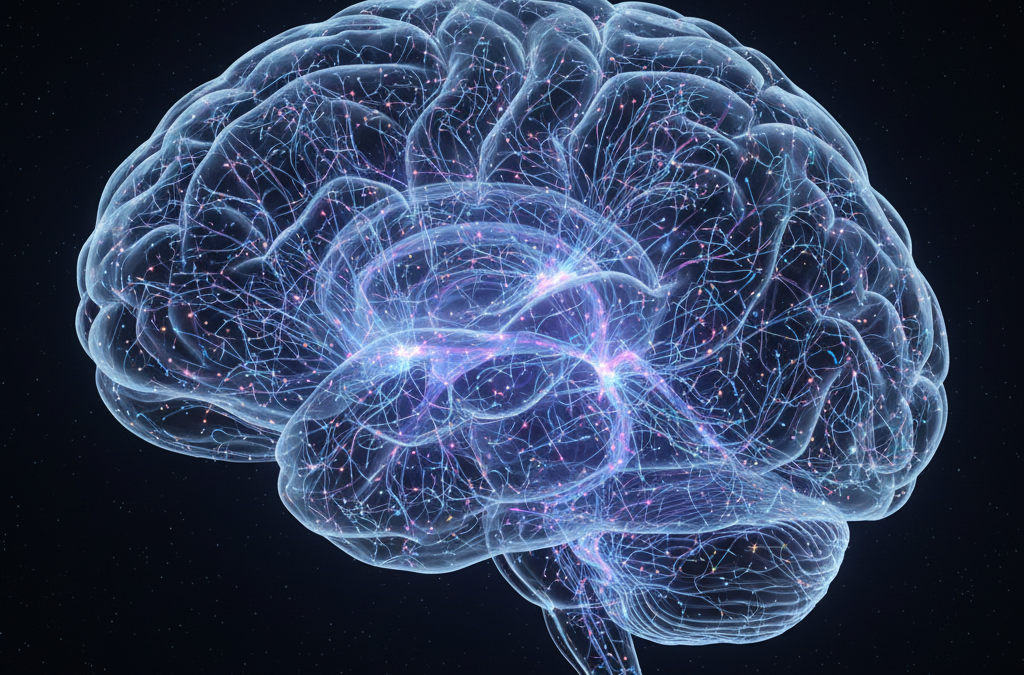If you’ve ever wondered what really happens during hypnosis, you’re not alone.
Most people picture a swinging watch, a soothing voice, and someone clucking like a chicken on stage.
But that’s not the kind of hypnosis we teach.
Therapeutic hypnosis isn’t about losing control.
It’s about gaining it.
It’s a state where your mind becomes more open, more focused, and more capable of changing long-held patterns because you’re finally speaking to the part of you that runs the show: the subconscious.
And when you understand the science behind it, hypnosis starts to make complete sense.
What is hypnosis, really
Hypnosis is a natural state of focused attention.It’s something you already do when you get lost in a book, drive home on autopilot, or forget where you put your phone while scrolling social media.
In those moments, your brain shifts from busy, analytical beta waves into calmer alpha and theta waves, the same states we access intentionally in hypnosis.
This gentle change in brain activity allows the conscious mind (the bit that overthinks and analyses) to quiet down so the subconscious mind can come forward.
That’s where your automatic beliefs, habits, emotions and memories live.
And that’s the part we work with in hypnotherapy.
In fact, neuroscience research shows that hypnosis activates the brain’s imagination networks while lowering activity in the parts that judge or doubt. Study on hypnosis and brain networks
So you’re not asleep. You’re highly aware, just deeply focused.
(Curious about how this feels in real life? Check out how hypnosis feels from the inside in this short video.)
What happens to the brain in hypnosis
Inside the brain, two powerful processes are at work: neuroplasticity and memory reconsolidation.
-
Neuroplasticity is the brain’s ability to rewire itself, creating new neural pathways every time we learn, practise, or change perspective. APA overview of neuroplasticity
-
Memory reconsolidation is the mechanism that allows old emotional memories to be updated with new information. ScienceDirect article on memory reconsolidation
During hypnosis, the brain is relaxed enough for new connections to form but alert enough to make those connections stick.
That’s why someone can walk into a session terrified of public speaking and walk out feeling calm, confident and capable.
They’ve literally reprogrammed their neural pathways, not through willpower but through subconscious alignment.
What clients experience during hypnosis
Everyone experiences hypnosis a little differently, but most describe it as:
-
Calm and peaceful
-
Deeply focused yet aware
-
Like meditation with a purpose
Some feel a pleasant heaviness in their body. Others feel light or floaty.
What’s consistent is the sense of safety and presence. Your mind finally stops running a hundred miles an hour.
And despite what the films might show, you are always in control.
You can talk, move, open your eyes, or stop at any time.
Your subconscious simply becomes more open to new, helpful suggestions, the kind that help you rewrite old patterns and create new ones.
(Want to know more about the power of the subconscious? Read how hypnotherapy helped me rewrite my life.)
The science of subconscious change
Think of your subconscious like the hard drive of your mind.
It stores every belief, every emotional reaction and every protective pattern you’ve ever formed.
Most of these were created before you were even ten years old.
So when someone says they just can’t stop worrying, procrastinating or doubting themselves, it’s not that they’re broken. Their brain is simply running an old programme.
Hypnosis gives you access to the operating system.
It allows you to safely update the code.
Modern research shows that during hypnosis, the brain regions linked to self-awareness, imagination and sensory perception become more connected. Frontiers in Human Neuroscience study
That’s why change feels easier, faster and more natural after hypnosis. It’s not positive thinking. It’s neuroscience in action.
Why learning hypnotherapy is learning the language of the brain
When you train in hypnotherapy, you’re not just learning a technique. You’re learning how to communicate with the subconscious mind.
You discover how to guide someone into trance, how to identify the root cause of their problem and how to help them rewire their thinking at the deepest level.
At Axiom Academy, we teach this through the N.E.U.R.O Shift Method, a framework rooted in memory reconsolidation and nervous system regulation.
It’s science-based, trauma-informed and deeply transformational.
Every student learns to blend neuroscience with compassion, becoming not just a practitioner but a catalyst for real, lasting change.
(Explore the Axiom Hypnotherapy Diploma to see how it works.)
Ready to See What’s Possible?
If you’d like to learn more about what it takes to become a certified and trained professional hypnotherapist, book a call today for an informal discussion. Want to get stuck in right now? You can sign up to our Online Hypnotherapy Diploma and get immediate access to all the materials and training you need to begin your journey to running your hypnotherapy practice here.

